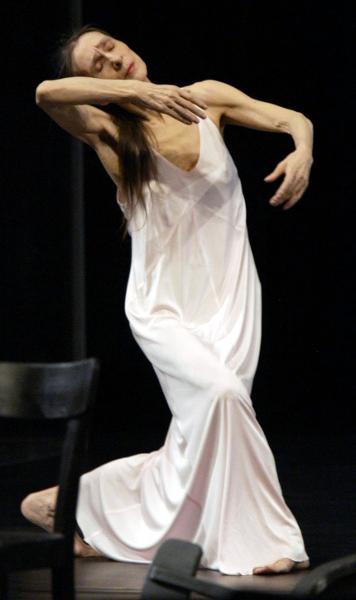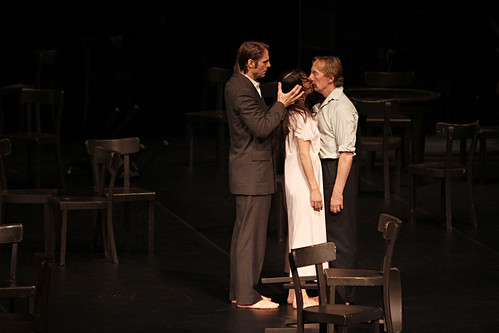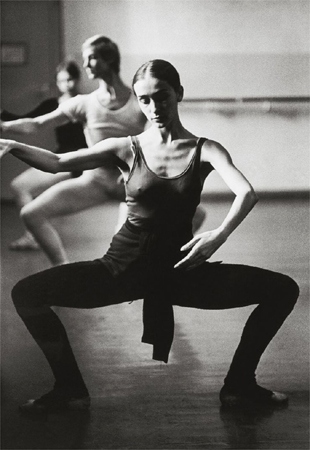"I'm not interested in how people move; I'm interested in what makes them move." - Pina Bausch

Bausch’s work continually delivers messages about societal conventions and human behavior (especially in regard to gender roles); it’s so raw and timeless, that it is certainly worthy of extensive analysis outside of the dance and theatre world. David W. Price, Ph.D., of Emory University describes Bausch’s tanztheater as a performance art that “reveals the body as the site of a social inscription – the body on which the writing of the politics of gender reveals itself in performative acts” (323). Her “dialectical examination” of the body as a political and social entity registers with much of the material I researched for a previous gender studies class. Societal conventions become so ingrained in us that it can become very hard to detect what is nature and what is nurture (ex: children's toys; Why is it assumed that young girls have a predisposition to Barbie, and young boys to G.I. Joe?).
Bausch examines these conventions and obscures them into movement and expression for her dance theatr e. An excellent example of this is Bausch’s 1978 work, Café Müller. This piece is about inadequate and inept attempts between men and women to establish relationships. It takes place in a
e. An excellent example of this is Bausch’s 1978 work, Café Müller. This piece is about inadequate and inept attempts between men and women to establish relationships. It takes place in a
café, but the maze of tables and chairs on the stage seem to represent more than just a place to eat. Bausch has obscured and abstracted this relatable, seemingly neutral situation in a way that shows how social structures inhibit and alienate individuals (specifically their movement and development). Bausch expands on the dichotomy and estrangement between the sexes by having women adopt schizoid behaviors, indicative of isolation, despair, and mental illness. This raises the question, why is it necessary, or even acceptable, for women to disfigure themselves in order to participate in society?
 e. An excellent example of this is Bausch’s 1978 work, Café Müller. This piece is about inadequate and inept attempts between men and women to establish relationships. It takes place in a
e. An excellent example of this is Bausch’s 1978 work, Café Müller. This piece is about inadequate and inept attempts between men and women to establish relationships. It takes place in aMan and woman succumbing to societal conventions.
café, but the maze of tables and chairs on the stage seem to represent more than just a place to eat. Bausch has obscured and abstracted this relatable, seemingly neutral situation in a way that shows how social structures inhibit and alienate individuals (specifically their movement and development). Bausch expands on the dichotomy and estrangement between the sexes by having women adopt schizoid behaviors, indicative of isolation, despair, and mental illness. This raises the question, why is it necessary, or even acceptable, for women to disfigure themselves in order to participate in society?
The questions that arise from Bausch’s work are endless. Her tanztheater has no resolution, so it causes her audience to think and reevaluate what they thought they already knew. Of course, there is always resistance to work as radical as hers; one review suggested that Café Müller be called “six go bonkers in an eaterie.” Interestingly enough, this same review praised her rendition of The Rite of Spring as "compelling" and "one of the best". Vaslav Nijinsky's original choreography for the Ballets Russes in 1913 met a large amount of resistance and even riotous behavior due to its shocking departure from all previous ballet choreography. Isn't it interesting how Rite has now become the classic against which contemporary artists are being compared?







